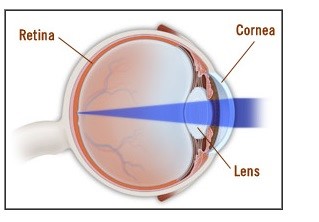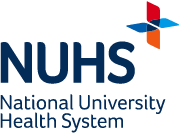What is Low Vision?
Low vision refers to visual impairment that cannot be corrected with standard glasses, contact lenses, medical treatment or surgery. Individuals with low vision experience severely reduced visual acuity, contrast sensitivity and/or significantly obstructed field of view.
Low vision may affect daily activities such as recognising faces, reading small prints and large signs, identifying obstacles and reduced independent mobility.
What Causes Low Vision?
Common causes of low vision include age-related macular degeneration, diabetic retinopathy, glaucoma, neurological conditions and trauma.
How Does NUH Help Persons with Low Vision?
NUH has established a Low Vision Enabling Programme, featuring a multidisciplinary team of optometrists and occupational therapists specialising in low vision rehabilitation. The team works closely with patients and their families to help regain lost function due to visual impairment. The approach encompasses a comprehensive strategy addressing visual and functional challenges related to reading, safety, daily activities, community participation, and psychological adjustment to vision loss.
What is Low Vision Rehabilitation?
Low vision rehabilitation aims to reduce the functional impediments imposed by vision loss. It begins with a low vision consultation, which involves optometric low vision evaluation and occupational therapy assessment. This may be followed by prescription and dispensing of low vision optical devices such as magnifiers, telescopes, assistive technology and sensorial adaptive devices as appropriate. In addition, visual skills trainings and adaptive therapies may be provided to maximise function, safety and independence. This comprehensive rehabilitation service can be conducted at home and/or in the clinic.
NUH Vision Care Services in the Community
NUH Vision Care Services, comprising the Eye Care for Empowered Community (EC2) and Seniors' Eye Rehabilitation Programme (SEER) <*HYPERLINK TO PAGE 1 ACCORDION 7 / COMMUNITY ENGAGEMENT AND OUTREACH SECTION>, was established in 2015 to identify seniors with poor or low vision, providing early intervention and teaching strategies for safe functioning within the limitations of their low vision.
Low Vision Consultation and Rehabilitation Are Provided By:
Mr Danial Bohan
Dip Optom (Merit), BSc (Hons), MSc
Senior Optometrist
Ms Chen Xuanyu
BHSc (Occ Therapy), PG Cert Low Vision Rehab
Senior Occupational Therapist


















